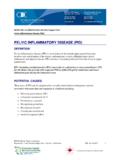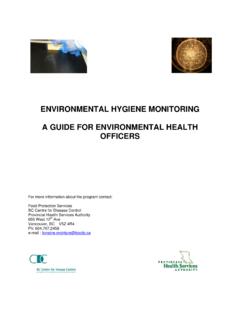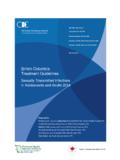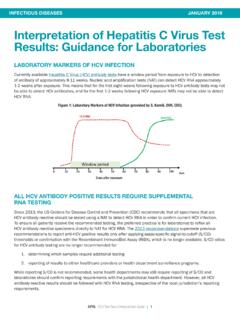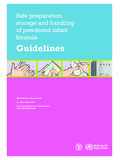Transcription of Communicable disease control
1 Communicable disease control Blood and Body Fluid Exposure Management October 2017 Page 1 TABLE OF CONTENTS INTRODUCTION .. 1 2 3 MANAGEMENT OF A PERSON WITH A BBF EXPOSURE .. 4 Initial follow-up care .. 4 Risk Assessment .. 4 Risk Factors .. 4 Needlestick injuries in a healthcare setting .. 6 Consent .. 7 Assessment of source person .. 8 Source person is unknown .. 8 Laboratory testing .. 8 Records Processing .. 10 POST EXPOSURE TREATMENT .. 10 10 HCV .. 11 HIV .. 11 Other interventions .. 11 COUNSELING GUIDELINES .. 12 Reduce potential transmission to contacts .. 12 Breastfeeding .. 12 Healthcare workers .. 13 Counselling .. 13 APPENDIX 1: Exposed person at risk of HBV infection .. 14 APPENDIX 2: Exposed person at risk for HCV infection.
2 15 APPENDIX 3: Exposed person at risk for HIV infection .. 16 APPENDIX 4: A Fact Sheet for Exposed Individuals .. 17 References .. 21 This document is best viewed online. There are embedded hyperlinks that appear as underlined words in print versions. Communicable disease control Blood and Body Fluid Exposure Management October 2017 Page 2 INTRODUCTION This document focuses on providing guidance for healthcare workers (HCW s) on the assessment of risk and management of persons potentially exposed to hepatitis B virus (HBV), hepatitis C virus (HCV) and Human Immunodeficiency Virus (HIV) transmission, through contact with blood and body fluids (BBF) in a healthcare or community setting. For additional information on managing BBF exposure in survivors of sexual assault and other considerations including STI screening, pregnancy prevention and medico-legal options, refer to: BC Women s Hospital Sexual Assault Service resources ( ) The BCCDC Non Certified Practice Decision Support Tool for Prophylaxis Post Sexual Assault ( ) Goals To support HCW s with information to reduce the transmission of bloodborne viruses by providing appropriate risk assessment and clinical management recommendations in persons exposed to BBF in a healthcare or community setting.
3 Using principles of health equity ( , trauma informed practice and culturally informed care), to: 1. Assess the risk of exposure 2. Test the exposed and source person 3. Administer PEP treatment when appropriate to prevent the development of HIV and/or HBV infection 4. Counsel to address anxiety, encourage follow-up testing and prevent further transmission Post-exposure management must be undertaken when the following conditions are present: Exposure is through a needlestick/scratch, permucosal contact or contact with compromised (damaged) skin Exposure is to blood or high-risk body fluids from a source that is either known to be infectious or might be potentially infectious (high-risk source or in settings where individuals engage in high-risk activities) The exposed person is known or considered to be at risk for HBV, HCV or HIV Practitioner Alert!
4 These guidelines are applicable to situations of sexual assault and potential BBF exposures involving healthcare workers. For guidance on the handling of exposures outside the parameters of this document ( , community acquired needlestick injuries) refer to the BCCDC Communicable disease control Manual, BC Centre for Excellence in HIV/AIDS (BC-CfE) guidelines and BC Women s Hospital Sexual Assault Service resources. Communicable disease control Blood and Body Fluid Exposure Management October 2017 Page 3 DEFINITIONS Bloodborne pathogen - Any pathogen that can be transmitted from one person to another via blood. These pathogens may also be transmitted by other body fluids. This varies depending on the pathogen, the type of body fluid and the nature of the exposure. Blood or body fluid (BBF) exposure - An event where a person is exposed to potentially infectious blood or bodily fluids through one of the following: Percutaneous exposure through puncture of skin by needlestick or another sharp object Permucosal exposure through contact with mucous membranes Non-intact skin exposure through eczema, scratches, and damaged skin Hepatitis B Immune Globulin (HBIg) Passive immunoprophylaxis used in combination with hepatitis B vaccine to prevent mother-to-infant transmission and in certain other post-exposure scenarios.
5 Prepared as a solution of hepatitis B Ig for intra-muscular administration. Waning anti-HBs levels can be detected up to 6 months later. Most effective if given within 48 hours, up to 7 days following percutaneous exposure and 14 days following permucosal exposure. High-risk settings Settings or communities with an established high prevalence of HBV, HCV and HIV. This includes needle distribution program sites, and acute care drug and alcohol treatment clinics. Post-exposure prophylaxis (PEP) HBV - hepatitis B vaccine and HBIg can provide susceptible individuals with protection from HBV infection after exposure to HBV in certain scenarios, when given within a certain timeframe. An assessment of the type of transmission event, and if available, the immunization histories and post-vaccination serologic testing of the source and exposed persons, will help guide the decision as to whether or not PEP is indicated.
6 HCV there is currently no PEP available HIV the use of antiretroviral drugs after a single high-risk event to prevent HIV seroconversion. They are most effective if started within 72 hours of exposure, ideally within 2 hours. Susceptibility a person is considered susceptible to: HBV if they have no history of a protective antibody level following administration of a complete hepatitis B vaccine series ( , anti-HBs levels less than 10 IU/L upon completion of vaccine series) OR no history of a test result indicating immunity from prior HBV infection ( , HBsAg nonreactive, anti-HBc Total reactive and anti-HBs > 10 IU/L) HCV if they have no history of prior anti-HCV infection ( , anti-HCV reactive or HCV RNA detectable) HIV if they have no history of a prior anti-HIV infection ( , anti-Ag/Ab reactive or HIV RNA detectable)
7 Window period duration of time between infection and laboratory detection of infection Communicable disease control Blood and Body Fluid Exposure Management October 2017 Page 4 MANAGEMENT OF A PERSON WITH A BBF EXPOSURE Initial follow-up care Needlestick/wound: Allow the wound to bleed freely Do not promote bleeding by squeezing the wound. This may damage the tissues and increase uptake of any pathogen(s). Wash well with soap and water Mucous membrane or eye: Irrigate with water or normal saline Skin: Wash well with soap and water Do not apply bleach to wound or mucosa Risk Assessment A risk assessment should be performed on the exposed person as soon as possible. If indicated, certain types of PEP may need to be given within 48 hours, some preferably within 2 hours.
8 This can be done at hospital emergency departments, occupational health departments or public health units. Risk Factors Assessment of the exposed person includes hepatitis B vaccine history and immune status, and personal risks for HCV and HIV. For complete lists of potential risk factors, refer to the BCCDC CDC Manual. Common Risk Factors for HBV, HCV and HIV Riskier sexual activity ( , multiple sex partners, unprotected sex) History of injection drug use History of dialysis Immigration from an endemic country Tattooing, body piercing, electrolysis or acupuncture due to unsterile practices HBV The risk of developing HBV infection following exposure is extremely low. The majority of BC s population under the age of 35 has been vaccinated since the introduction of a grade 6 hepatitis B immunization program in 1992 and a universal hepatitis B infant program in 2001.
9 Most HCW s have undergone HBV testing and vaccination related to workplace screening. For those who are not fully immunized, effective post-exposure treatment can be achieved by administering hepatitis B vaccine and if indicated, HBIg. HBV can be spread through percutaneous or permucosal contact with infected blood and body fluids. Risk factors for HBV include: History of multiple transfusions of blood or blood products prior to January 1970 A sexual partner of a person who injects drugs (PWID) or who has an acute or chronic HBV infection Immigration from an HBV endemic country Potential exposure to a person known to be infected with HBV If the exposed person has documentation of immunity after completion of a full hepatitis B vaccine series, the risk of HBV from a bloodborne exposure is virtually zero.
10 In unvaccinated individuals, the risk of sexual or needlestick transmission is increased if the source has HBV DNA > 1000-2000 IU/mL. Communicable disease control Blood and Body Fluid Exposure Management October 2017 Page 5 HCV Immunization against HCV is not available; however, if an exposure leads to HCV infection, approximately 25% of infections clear spontaneously and > 95% of people can be cured on treatment. HCV is mainly spread by percutaneous contact with infected blood. Risk factors for HCV include: A history of receiving multiple transfusions of blood or blood products prior to May 1992 Potential exposure to a person known to be infected with HCV Sexual transmission is rare. The risk increases with activities where blood is present ( , anal and/or rough sex causing mucosal tearing) with a partner who engages in illicit drug use (IDU) and/or is HCV positive.
